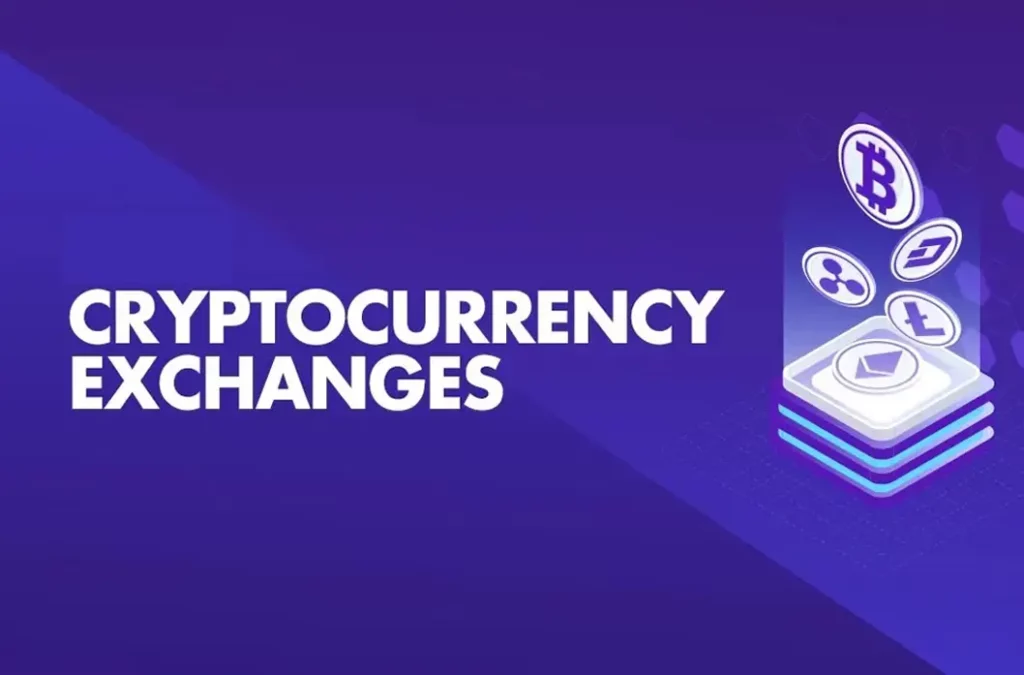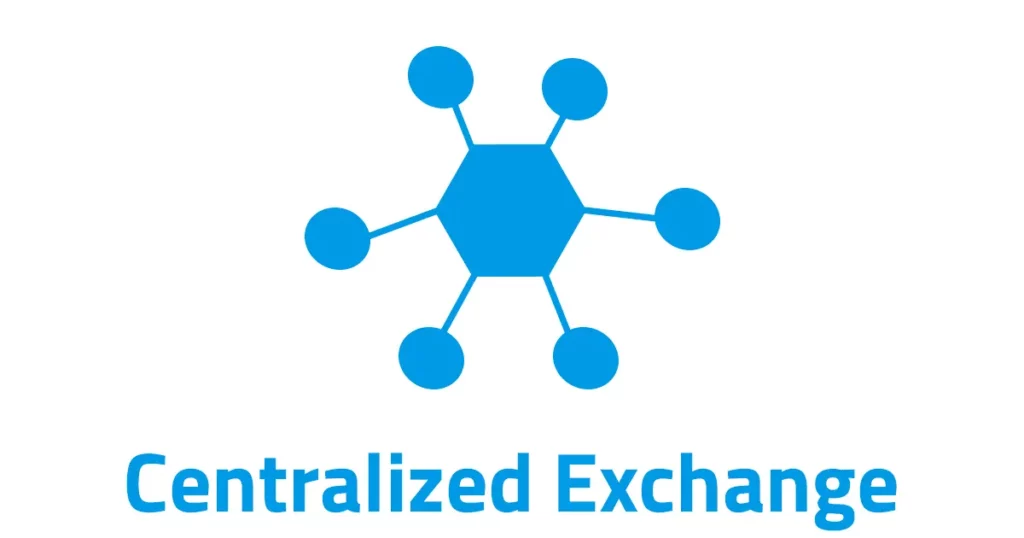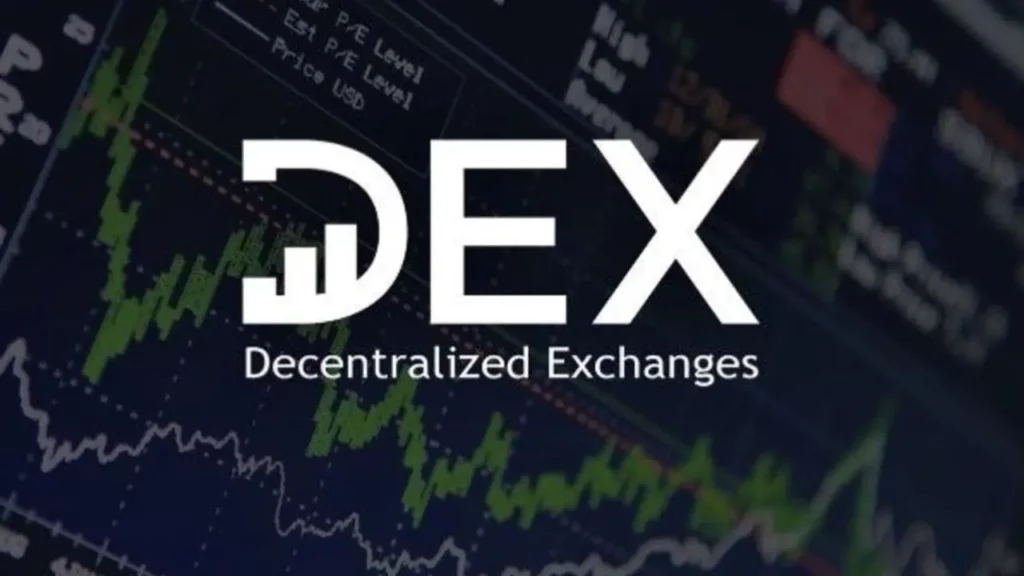Decentralized vs Centralized Crypto Exchanges in 2026
Written by Michael Hayes
Michael Hayes, a seasoned finance professional, enhanced his expertise by attending executive education programs in Finance at the prestigious Wharton School of the University of Pennsylvania. With a career spanning over 20 years, Michael has gained extensive experience in financial analysis, investment management, and strategic financial planning. His deep understanding of financial markets, coupled with his passion for continuous learning, has made him a trusted advisor in the field
Expert Reviewed
This article has been reviewed by crypto market experts at SCM to ensure all the content, sources, and claims adhere to the highest standards of accuracy and reliability.
Last Updated on December 8, 2025
When navigating the crypto landscape, one major decision you’ll face is choosing between a centralized exchange (CEX) and a decentralized exchange (DEX).
Centralized exchanges, like Binance and Coinbase, operate similarly to traditional banks, acting as intermediaries and custodians of your assets.
These platforms are generally easy to use, support a wide range of cryptocurrencies, and offer high liquidity. However, they can be vulnerable to hacks and regulatory scrutiny.
On the other hand, decentralized exchanges, such as Uniswap and PancakeSwap, offer a different approach by eliminating intermediaries and facilitating peer-to-peer trading through smart contracts on the blockchain.
This structure increases security since there’s no central point of attack, but it can also mean lower liquidity and fewer crypto-asset options.
Additionally, the user experience can be more complex, requiring a deeper understanding of blockchain technology.
Understanding the pros and cons of centralized and decentralized exchanges is crucial for developing your cryptocurrency strategy.
Whether you prioritize security or convenience will ultimately guide your choice. You can determine the best platform to match your trading needs and goals by weighing these factors.
Understanding Crypto Exchanges

Crypto exchanges serve as platforms for trading cryptocurrencies. These exchanges can be classified into centralized and decentralized categories, each with its structure, features, and implications for users.
Defining Centralized and Decentralized Exchanges
Centralized cryptocurrency exchanges (CEXs) are managed by a central authority that oversees transactions, user accounts, and security.
Examples include Coinbase and Binance. CEXs often offer user-friendly interfaces, robust trading volumes, and support for many cryptocurrencies.
In contrast, decentralized exchanges (DEXs) operate without a central authority. Notable examples are Uniswap and PancakeSwap.
DEXs use smart contracts to facilitate direct user trade, enhancing privacy and security. However, DEXs may have a steeper learning curve and fewer available trading pairs.
The Role of Liquidity in Crypto Exchanges
Liquidity refers to how easily an asset can be bought or sold without affecting its price. High liquidity in exchanges means faster and more stable transactions.
Centralized exchanges typically enjoy higher liquidity due to a larger pool of users and higher trading volumes.
Decentralized exchanges often face liquidity challenges. Lower trading volumes can lead to longer transaction times and higher price volatility.
However, some DEXs have implemented liquidity pools and incentives to enhance their liquidity. Understanding liquidity is crucial for effective trading on these platforms.
Key Features of Centralized Crypto Exchanges

Centralized crypto exchanges are famous for their user-friendly interfaces and robust security measures. They often require users to comply with KYC and AML regulations and provide custodial services to safeguard digital assets.
Understanding KYC and AML Compliance
Centralized exchanges enforce Know Your Customer (KYC) and Anti-Money Laundering (AML) regulations to prevent illegal activities.
You must submit personal information and identification documents during the registration process. This helps the exchange verify your identity.
KYC procedures ensure the platform can track individual transactions, reducing the risk of fraud and illegal activities. Compliance with AML regulations helps detect and prevent money laundering.
Centralized exchanges usually have teams dedicated to monitoring and reporting suspicious activities, enhancing the security and legality of transactions.
Security Measures and Custodial Services
Security is a significant priority for centralized exchanges.
These platforms implement advanced security protocols to protect user funds and data.
Standard measures include two-factor authentication (2FA), encrypted communications, and regular security audits to identify potential vulnerabilities.
Centralized exchanges also provide custodial services, holding the private keys to your digital assets. This feature is convenient for users who prefer not to manage their keys.
It also means that the exchange is responsible for safeguarding your assets, which may involve storing funds in secure offline environments or “cold wallets.”
Despite these measures, you should know that centralized exchanges can be targets for hacker attacks. Even so, many platforms offer insurance policies to cover potential losses, providing additional peace of mind.
The Architecture of Decentralized Exchanges

Decentralized exchanges (DEXs) operate on blockchain technology and leverage smart contracts to facilitate automated, peer-to-peer trading.
They rely heavily on decentralized applications (dApps) for their user interface and interaction.
Smart Contracts and Automated Functions
At the core of DEX architecture are smart contracts.
These self-executing contracts have the terms of the agreement directly written into code. Intelligent contracts handle transactions automatically when specified conditions are met.
This automation eliminates the need for intermediaries, making processes more efficient and reducing costs.
Additionally, permissionless access allows anyone with a compatible wallet to interact with the DEX, increasing participation and global reach.
DEXs also rely on the blockchain to provide transparency and security. Once a transaction is recorded, it becomes a permanent part of the blockchain, ensuring tamper-proof records.
User Interface and Decentralized Applications
The user interface of DEXs is typically facilitated through decentralized applications (dApps). Unlike traditional apps that rely on centralized servers, these applications run on blockchain networks.
Users interact with DEXs through non-custodial wallets, meaning you maintain control of your private keys and funds. This feature enhances security by mitigating risks associated with centralized storage.
The interface of a DEX is designed to be user-friendly despite the complexity of its backend operations. Often, you can swap tokens directly within your wallet, providing a seamless trading experience.
With continuous improvements, the interface and underlying technology of DEXs are becoming increasingly sophisticated, aiming to match or surpass the usability of centralized exchanges.
Comparing Fees and Costs
Comparing fees and costs between centralized (CEX) and decentralized exchanges (DEX) involves understanding the various fee structures and additional costs that impact traders, including slippage and gas fees.
Fee Structures in CEXs vs. DEXs
Centralized exchanges typically charge trading fees based on a maker-taker model.
Makers who add liquidity to the exchange pay lower fees than takers who remove liquidity. Average maker fees on CEXs are around 0.174%, while taker fees are about 0.189%.
Decentralized exchanges, on the other hand, often have slightly different fee structures. While maker and taker fees on DEXs may be lower, they require on-chain settlements, which involve additional costs.
To illustrate:
| Type | Maker Fee | Taker Fee |
|---|---|---|
| SEX | 0.174% | 0.189% |
| DEX | 0.185% | Varies |
Despite this, the total cost of trading on a DEX can be higher due to other factors.
Impact of Slippage and Gas Fees on Traders
Gas fees are unique to DEXs and represent the cost of executing transactions on the blockchain. For instance, each trade might require multiple steps, such as transaction approval and token swaps, incurring gas fees at each stage.
Slippage, the difference between the expected price of a trade and the actual executed price, can also affect costs. High volatility or low liquidity can lead to significant slippage on DEXs, increasing the total cost of trades.
Some DEXs offer limit orders to minimize slippage, though this may not permanently eliminate the issue.
Conversely, CEXs generally have lower slippage due to higher liquidity and efficient order matching, making them more predictable cost-wise.
It would be best to weigh these factors when choosing between CEXs and DEXs based on your trading strategy and cost tolerance.
Analyzing Security and Risks
In the realm of cryptocurrency exchanges, security is paramount. Both centralized and decentralized exchanges have distinct security features and associated risks.
Custodial Risks in Centralized Systems
Centralized exchanges act as custodians of your assets, holding your private keys. This setup makes them attractive targets for hackers. High-profile hacks like those involving Bitmart and Mt. Gox underscore the vulnerabilities.
These platforms sometimes offer insurance to mitigate risks, but coverage can be limited.
Custodial risks are significant because losing private keys means losing access to your assets. Furthermore, the centralized nature creates a single point of failure, making these exchanges a bigger attack target.
Smart Contract Vulnerabilities in Decentralization
Decentralized exchanges (DEXs) rely on smart contracts to execute transactions, shifting some security risks from the platform to the code.
These contracts are susceptible to hacks if the code is flawed. Individual intelligent contracts can be targeted, but the decentralized nature eliminates a single point of failure.
Intelligent contract vulnerabilities can lead to impermanent loss, where assets locked in a contract lose value due to market volatility.
Unlike centralized exchanges, DEXs don’t usually offer insurance for these incidents. To minimize potential losses, it’s crucial to scrutinize the intelligent contracts you interact with.
Regulatory Considerations and Compliance
Compliance with regulatory frameworks is a crucial aspect that distinguishes centralized crypto exchanges from decentralized ones.
Each type faces unique challenges and expectations regarding Know Your Customer (KYC) requirements, Anti-Money Laundering (AML) protocols, and general regulatory oversight.
Centralized Exchanges and Regulatory Oversight
Centralized exchanges (CEXs) often act as intermediaries between buyers and sellers, placing them under regulatory scrutiny.
Typically, these platforms must comply with stringent KYC and AML obligations.
- KYC Requirements
CEXs require users to verify their identity before engaging in transactions. This process involves submitting personal information and identification documents. This helps prevent fraudulent activities and enhances transparency.
- AML Compliance
CEXs use AML protocols to detect and prevent money laundering activities. This often includes monitoring transactions for suspicious patterns and reporting them to authorities. Many regulatory bodies, including the Financial Action Task Force (FATF), set these standards.
- Regulatory Bodies
CEXs are subject to regulations from various governmental agencies, such as the U.S. Securities and Exchange Commission (SEC) and the European Securities and Markets Authority (ESMA).
Compliance with these regulations is vital to avoid legal repercussions and ensure a seamless operation.
Decentralized Exchanges and the Push for Regulation
Unlike their centralized counterparts, decentralized exchanges (DEXs) operate without a central authority. This raises unique regulatory challenges.
- Autonomy vs. Compliance
DEXs prioritize privacy and autonomy. However, achieving regulatory compliance while maintaining these principles is complex. Some DEXs have begun introducing KYC measures to mitigate risks.
- Challenges in AML
Enforcing AML protocols on DEXs is more challenging due to the lack of centralized control. Intelligent contracts manage transactions, making traditional oversight methods less effective. Innovative approaches are being developed to tackle these issues.
- Emerging Regulations
As DEXs grow, regulatory bodies are increasingly focusing on how to apply existing laws to these platforms.
International collaborations and new regulatory frameworks are being proposed to ensure DEXs can operate legally while offering their users privacy and autonomy.
Evaluating the User Experience
The user experience on crypto exchanges varies significantly between centralized and decentralized platforms. Key differences include ease of navigation, user autonomy, and the level of monitoring and assistance available to traders.
Navigating Centralized Crypto Exchange Interfaces
Centralized exchanges (CEX) are praised for their user-friendly interfaces. Designed with beginners in mind, they provide intuitive dashboards that simplify trading tasks.
You will find features like one-click purchasing, portfolio management tools, and detailed performance charts. These conveniences make buying and selling cryptocurrencies straightforward.
Additionally, CEX platforms usually offer comprehensive customer support. Real-time assistance through chat or email is commonly available to help you resolve issues quickly.
By centralizing functions, these exchanges streamline transactions and minimize the required technical knowledge, which benefits individuals new to crypto trading.
User Autonomy in Decentralized Platforms
Decentralized exchanges (DEX) prioritize autonomy and privacy, allowing you to trade without intermediaries. This means enhanced control over your assets and data.
With DEXs, transactions are executed directly between users through smart contracts, offering higher transparency. Uniswap and PancakeSwap are examples of ways you can manage your trades without third-party oversight.
However, this autonomy comes with understanding blockchain technology and smart contracts better.
You handle your security, requiring vigilance and knowledge about wallet management and transaction verification. While the lack of centralized monitoring might appeal to experienced traders, it could present challenges for beginners.
Navigating these platforms can feel like a DIY experience, requiring more effort and expertise.
Trading Options and Market Access
Different types of crypto exchanges offer various trading possibilities and levels of market access.
Centralized exchanges provide extensive market depth and a wide range of trading pairs, while decentralized exchanges enable access to unique tokens and pairs.
Centralized Exchange Market Depth and Variety
Centralized exchanges (CEXs) are known for their extensive market depth and variety of trading options. They offer spot and futures trading, providing users several ways to engage with the market.
The order book system used by CEXs ensures liquidity by efficiently matching buy and sell orders.
These platforms often list numerous pairs, including fiat/cryptocurrency pairs, making it easier for users to trade directly using traditional currencies.
Major exchanges such as Binance and Coinbase often feature popular cryptocurrencies and numerous altcoins. This range allows you to diversify your portfolio and explore various market sectors.
The high liquidity on these platforms means faster transactions and better pricing, making them attractive for retail and institutional investors.
Accessing Unique Tokens and Pairs on DEXs
Decentralized exchanges (DEXs) provide unique market access, especially for tokens not typically found on centralized platforms.
These exchanges use on-chain smart contracts to facilitate trades without intermediaries, enhancing privacy and control over your funds.
DEXs are ideal for accessing new or niche cryptocurrencies that might not be supported on CEXs. For example, many initial coin offerings (ICOs) and newly launched tokens are often available first on DEXs.
These platforms can sometimes offer more favorable trading conditions for unique token pairs without intermediaries.
Liquidity can vary significantly between DEXs, potentially leading to slower transaction times or less favorable pricing than CEXs.
Using DEXs allows for greater privacy and autonomy, enabling you to trade directly from your wallet without undergoing extensive verification processes prevalent in centralized exchanges.
Prospects for Investment and Growth
Exploring investment strategies and understanding growth potential is crucial in choosing between centralized and decentralized crypto exchanges.
A detailed analysis reveals distinct reasons investors are inclined towards either type.
Investment Strategies with Centralized Exchanges
Centralized exchanges (CEXs) provide a more stable and liquid trading environment.
These platforms often attract higher trading volumes, which can benefit investors looking for quick trades with minimal slippage.
High liquidity levels mean you can execute large transactions without significantly impacting the market.
Security features in CEXs are usually robust, safeguarding investments. They also offer various trading tools and advanced features, aiding strategic investment decisions.
Given their established structure, regulatory compliance, and user-friendly interface, CEXs are often favored by institutional investors and newcomers in the crypto space.
The stability centralized exchanges provide is a significant factor for many when investing in volatile markets.
Growth Potential in Decentralized Exchange Space
Decentralized exchanges (DEXs) present a unique growth potential by facilitating peer-to-peer trading and prioritizing privacy.
These platforms can operate without central authority, often providing enhanced autonomy and innovating rapidly in crypto.
DEXs also tend to have lower fees due to removing intermediaries, appealing to investors looking to reduce costs. The use of intelligent contracts ensures transparent and automatic execution of trades.
Over the long term, this model could significantly boost the adoption and expansion of decentralized exchanges.
While trading on DEXs can be slower, advancements in blockchain technology continue to address these issues, enhancing speed and reliability.
The decentralized exchange space offers considerable opportunities for investors interested in the potential high returns from emerging technologies and markets.
Future Trends in Crypto Exchanges
As the landscape of cryptocurrency exchanges evolves, both centralized (CEX) and decentralized (DEX) platforms are expected to undergo significant changes.
This section explores the anticipated developments in centralization and the innovative advancements in decentralized exchanges.
Anticipating Developments in Centralization
Centralized exchanges will likely continue expanding their support for a broader range of cryptocurrencies, integrating DeFi (Decentralized Finance) features. Enhanced user experience remains a priority, aiming for more intuitive interfaces.
You can also expect increased focus on regulatory compliance and security measures.
These exchanges will likely adopt blockchain technology for transparent and secure transactions while potentially offering fiat currency support.
Withdrawal processes are projected to become faster due to technological advancements, reducing downtime, and enhancing user satisfaction.
Innovation and Evolving Technologies in DEXs
In decentralized exchanges, you will see significant innovations driven by smart contracts and blockchain technology. Interoperability among various blockchain networks will become crucial, allowing seamless cross-chain transactions.
The user interface of DEXs is anticipated to become more user-friendly, mimicking the ease of traditional CEXs.
Additionally, implementing automated market makers (AMMs) and liquidity pools will likely boost liquidity and minimize trading fees.
Expect continuous improvements in the speed and efficiency of transactions, reinforcing the decentralized nature of these platforms and providing a viable alternative to centralized exchanges.
Frequently Asked Questions
When engaging with cryptocurrency exchanges, there are essential distinctions between centralized (CEX) and decentralized (DEX) platforms. These differences impact security, user experience, and various other factors.
What are the critical differences between centralized and decentralized cryptocurrency exchanges?
A centralized organization manages centralized exchanges (CEX). They often offer higher liquidity and faster transaction speeds.
Decentralized exchanges (DEX) operate without a central authority, often giving users greater control over their funds.
What are the significant downsides associated with using decentralized exchanges?
Decentralized exchanges frequently have lower liquidity than their centralized counterparts, leading to slower transaction times.
DEXs may also feature more complex user interfaces, making them less accessible for beginners.
How does the user experience differ between centralized and decentralized exchanges?
Centralized exchanges typically offer a more user-friendly experience with intuitive interfaces and customer support.
Decentralized exchanges might be more challenging for new users but offer greater autonomy and privacy.
Can you list prominent examples of centralized and decentralized crypto exchanges?
Prominent centralized exchanges include Binance, Coinbase, and Kraken.
Critical examples of decentralized exchanges are Uniswap, SushiSwap, and PancakeSwap.
What essential factors should traders consider when choosing between a centralized and a decentralized exchange?
Traders should consider security, liquidity, transaction speed, and user interface factors.
The choice often depends on a trader’s experience level and personal preferences for control and privacy.
What are the implications for security when using centralized versus decentralized crypto exchanges?
Hackers often target centralized exchanges due to their centralized nature, posing a higher risk for large-scale breaches.
Decentralized exchanges distribute the risk across individual intelligent contracts, providing a level of security that is more challenging for hackers to compromise en masse.

